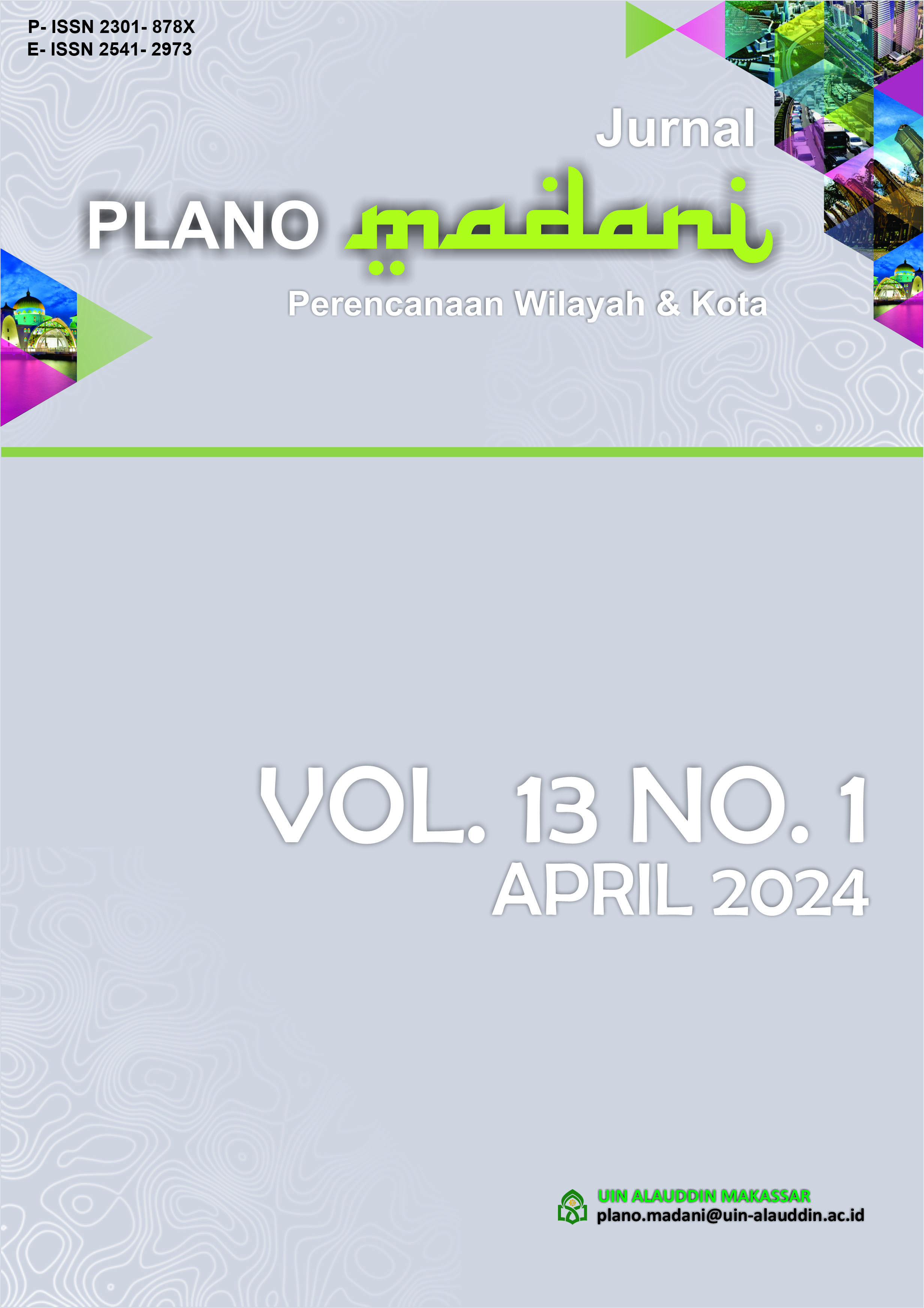IDENTIFICATION CHARACTERISTICS OF MUSI RIVERSIDE AREAS IN PALEMBANG CITY (CASE STUDY: 5 ULU AND 7 ULU SUBDISTRICTS)
Abstract
The Musi River waterfront area in Palembang City has been a traditional residential settlement area since the era of the Sriwijaya Kingdom. The riverbank area has been chosen by the community as a place to reside due to the benefits of the river, which offers many potential resources and ease of river transportation access. This research aims to identify the characteristics of areas along the riverbanks in the 5 Ulu and 7 Ulu Subdistricts, Seberang Ulu 1 District, using a qualitative research approach. Data collection techniques employed include observation, interviews, and document review, followed by analysis comprising qualitative data analysis and Spradley model analysis. The research results outline that the identification of the characteristics of the Musi River waterfront area is based on both non-physical settlement aspects and physical settlement aspects. The non-physical settlement aspects describe that the research area has a long history as a traditional settlement for the ethnic Chinese community, with the local economy being predominantly medium to low, engaged in trading, river transport services, and household industries. Additionally, there is a diverse range of community groups with high levels of social interaction. The physical settlement aspect of the research area is predominantly residential, following a linear pattern along the Musi River and roads, with moderate to high population density. The majority of buildings are raised platform houses, and infrastructure and facilities still need further development to meet the needs of the local community.
Downloads
References
Agustian, E., Rachmawati, R., Rijanta, R., & Pitoyo, A. J. (2020). “Characteristic of multi-ethnic settlement in Indonesia, a case study: Kampung 3-4 Ulu Laut settlement on Musi Riverbank in Palembang City.” In E3S Web of Conferences (Vol. 200, p. 03002). EDP Sciences.
Agustian, E., Rachmawati, R., Rijanta, R., & Pitoyo, A. J. (2021). “Pola Permukiman Multietnik di Kampung Islam Kepaon Kota Denpasar dan Kawasan Kampung Melayu di Kota Semarang.” Syntax Literate; Jurnal Ilmiah Indonesia, 6(4), 1661-1675.
Al-sajidi. N. S. (2019). “Sejarah Palembang” Palembang: Dinas Kebudayaan Kota Palembang.
Azizah, A. N., & Suheri, T. (2020). "Identifikasi Karakteristik Fisik Dan Masyarakat Dalam Mengelola Kawasan Permukiman Sempadan Sungai." Jurnal Wilayah Kota 7.2.
Maryono. A. (2014). “Pengelolaan Kawasan Sempadan Sungai: Peraturan, Kelembagaan, Tata Ruang, Sosial, Morfologi, Ekologi, Hidrologi, dan Keteknikan” Yogyakarta: Gadjah Mada University Press.
Moleong. L. J. (1998). “Metodologi Penelitian Kualitatif.” Bandung: Remaja Rosdakarya.
Nazir. M. (2005). “Metode Penelitian.” Jakarta: Ghalia Indonesia.
Nugroho. A. R. (2016). “Mengelola Jejak Sejarah Sungai Musi.” Diakses pada 18 November 2021 dari https://travel.kompas.com/read/2016/08/12/173200927/Kota.Palembang.Mengelola.Jejak.Sejarah.di.Sungai.Musi?page=all
Raco. (2010). “Metode Penelitian Kualitatif: Jenis, Karakteristik dan Keunggulan” Jakarta: Grasindo.
Rijksmuseum.nl. (2020). “Kaart van de rivier bij Palembang, 1821.” Diakses pada 26 Juli 2022 dari https://www.rijksmuseum.nl/en/my/collections/2454756--verzamelingen/palembang/objecten#/RP-P-OB-87.399,9
Sastika, A., & Abdul, Y. (2017). "Karakteristik Permukiman Di Tepian Sungai: Studi Kasus: Permukiman Di Tepian Sungai Musi." Jurnal Koridor 8.2. Hal: 83:88.
Utami, S. Q., Suriadi, A., & Heldayani, E. (2019). “Identifikasi Karakteristik Permukiman Melalui Sistem Informasi Geografis Di Kelurahan 1 Ulu, Kecamatan Seberang Ulu 1, Kota Palembang.” Jurnal Geografi Gea, 19(1), 32-41.
Wijaya. H. (2018). “Analisis Data Kualitatif Model Spradley (etnografi).” STT Jaffray.
Peraturan Pemerintah Republik Indonesia Nomor 38 Tahun 2011 Tentang Sungai.
Peraturan Menteri PUPR Nomor 28 Tahun 2015 tentang Penetapan Garis Sempadan Sungai dan Garis Sempadan Danau.
Copyright (c) 2024 Arditia Larasati Utomo, Endy Agustian, Herda Sabriyah Dara Kospa

This work is licensed under a Creative Commons Attribution-NonCommercial-ShareAlike 4.0 International License.
By Submitting your manuscript to our journal, your are following Copyright & License

